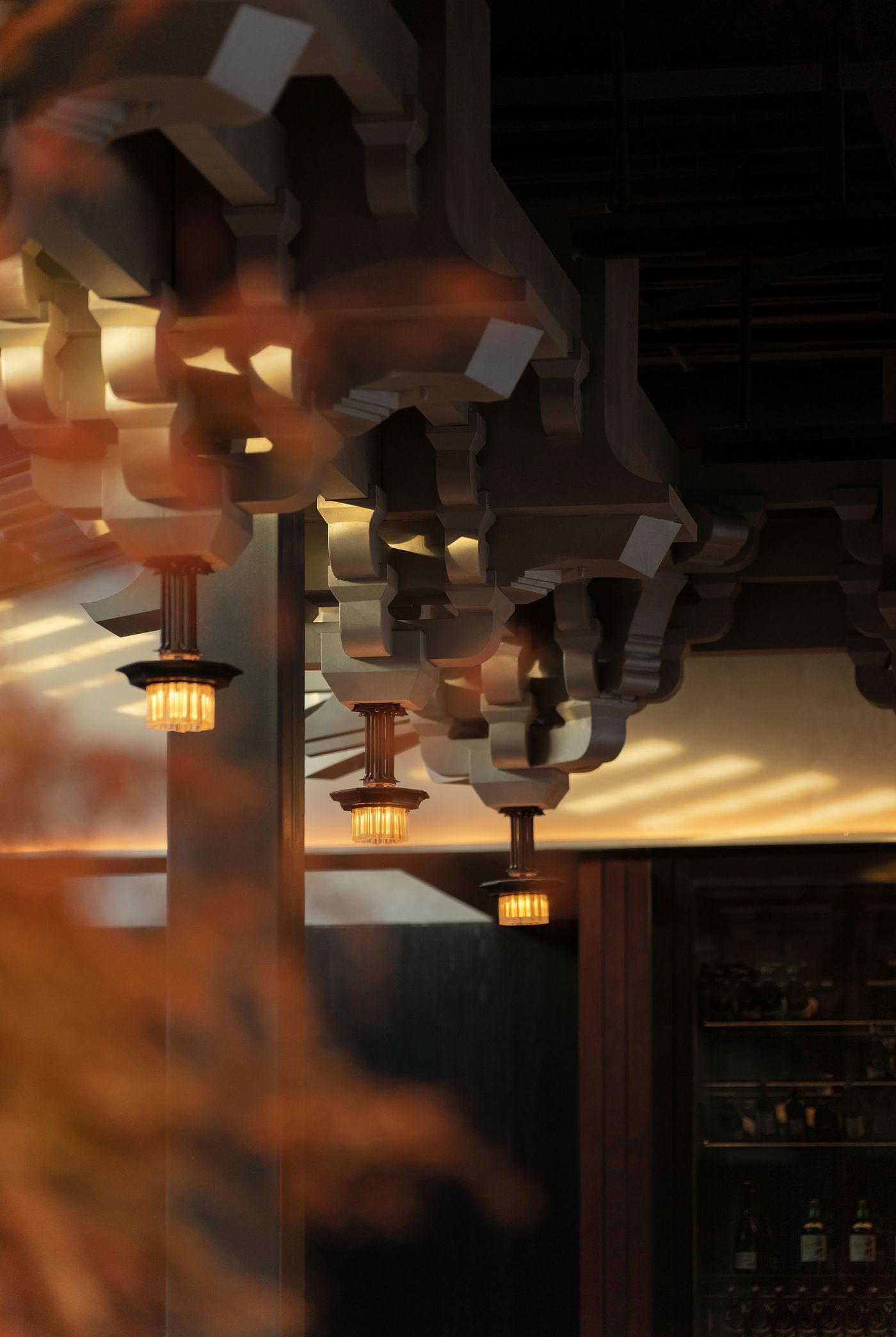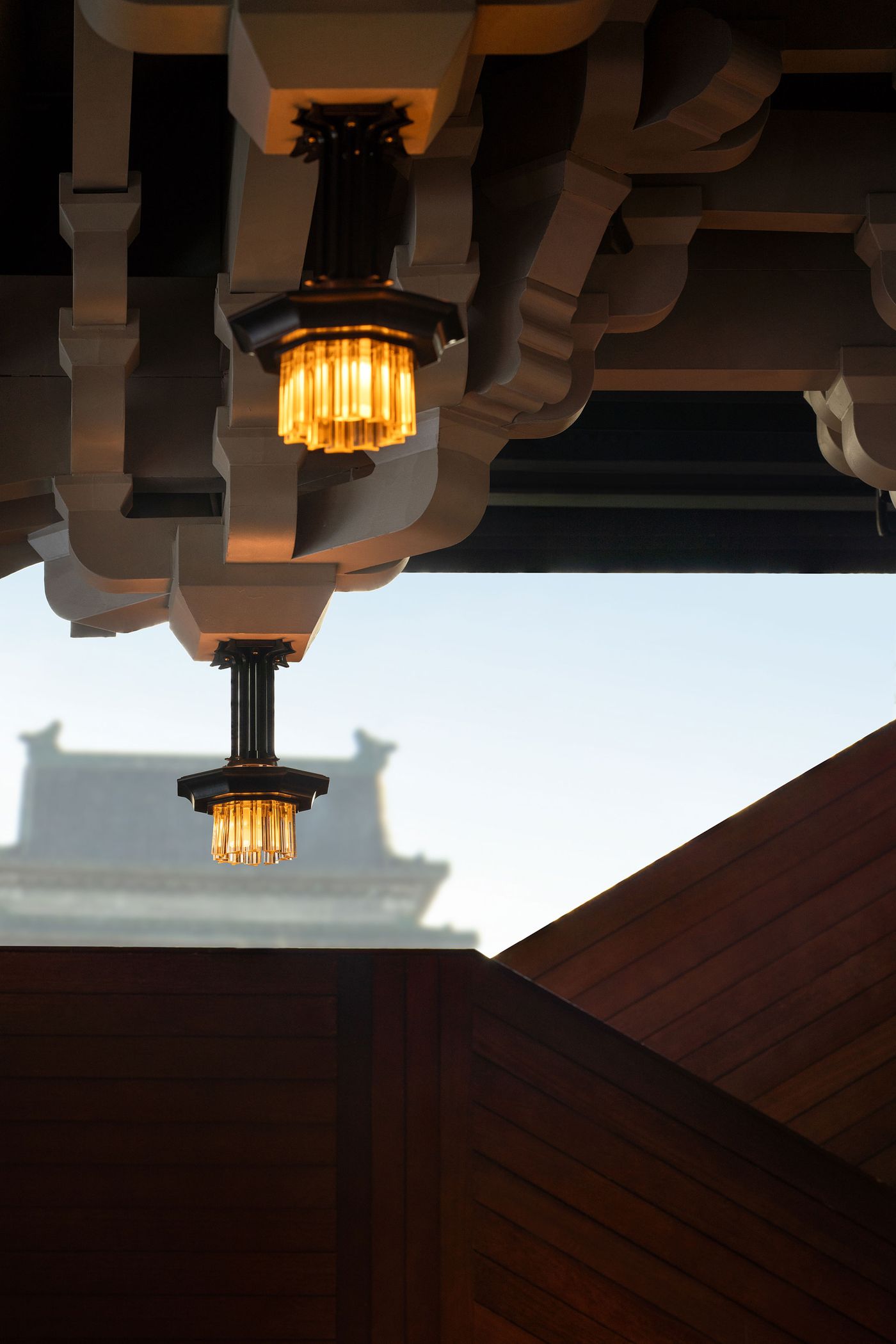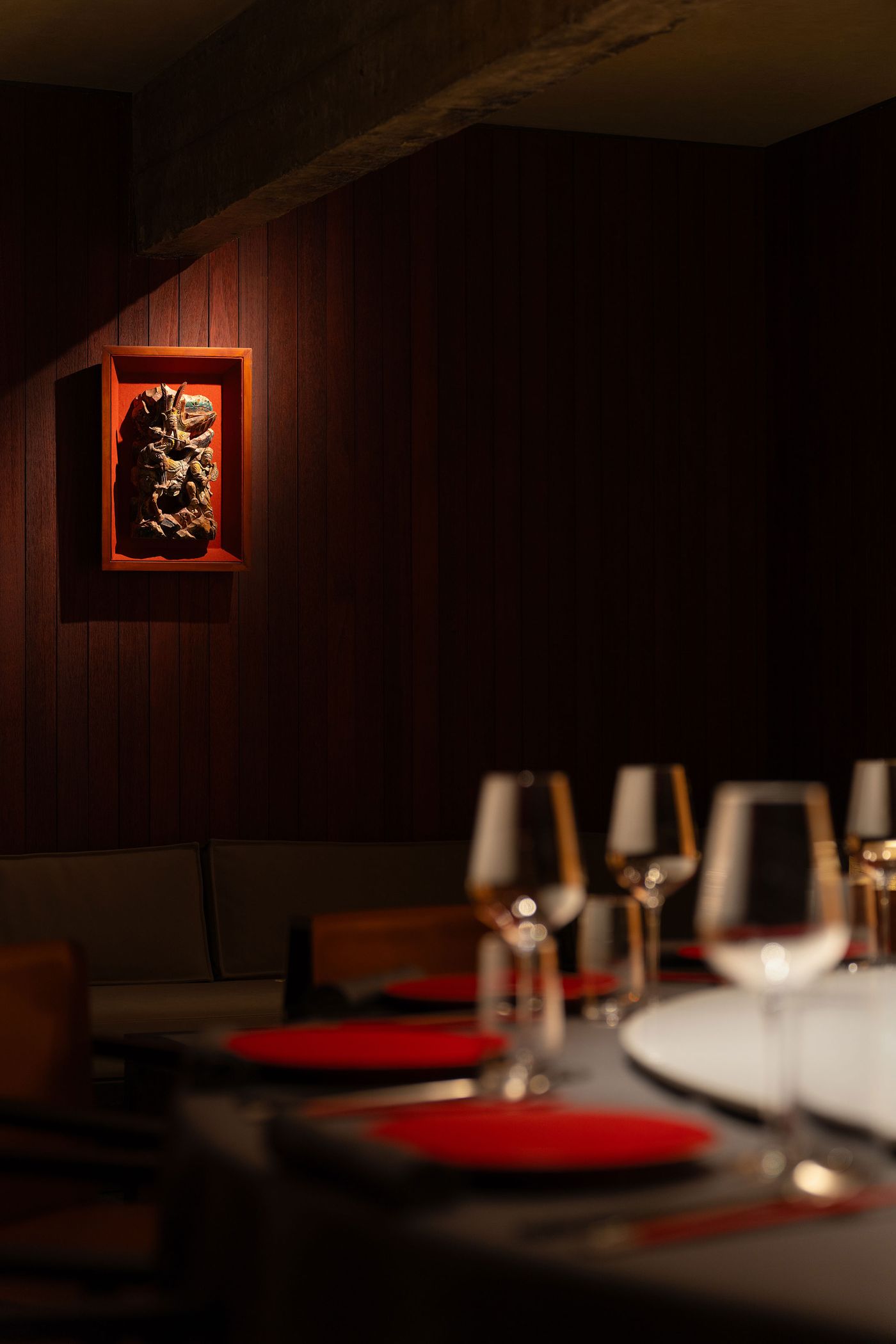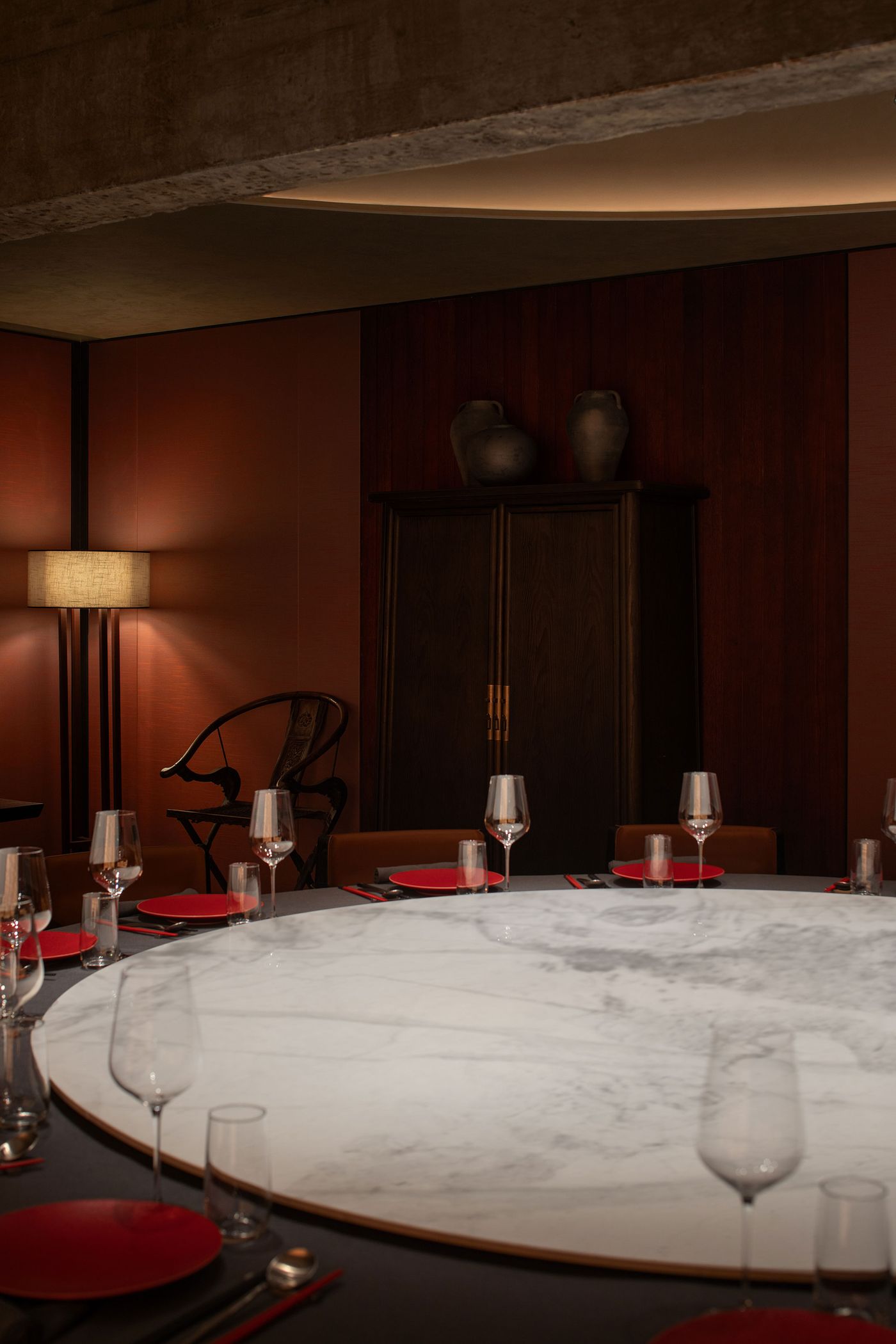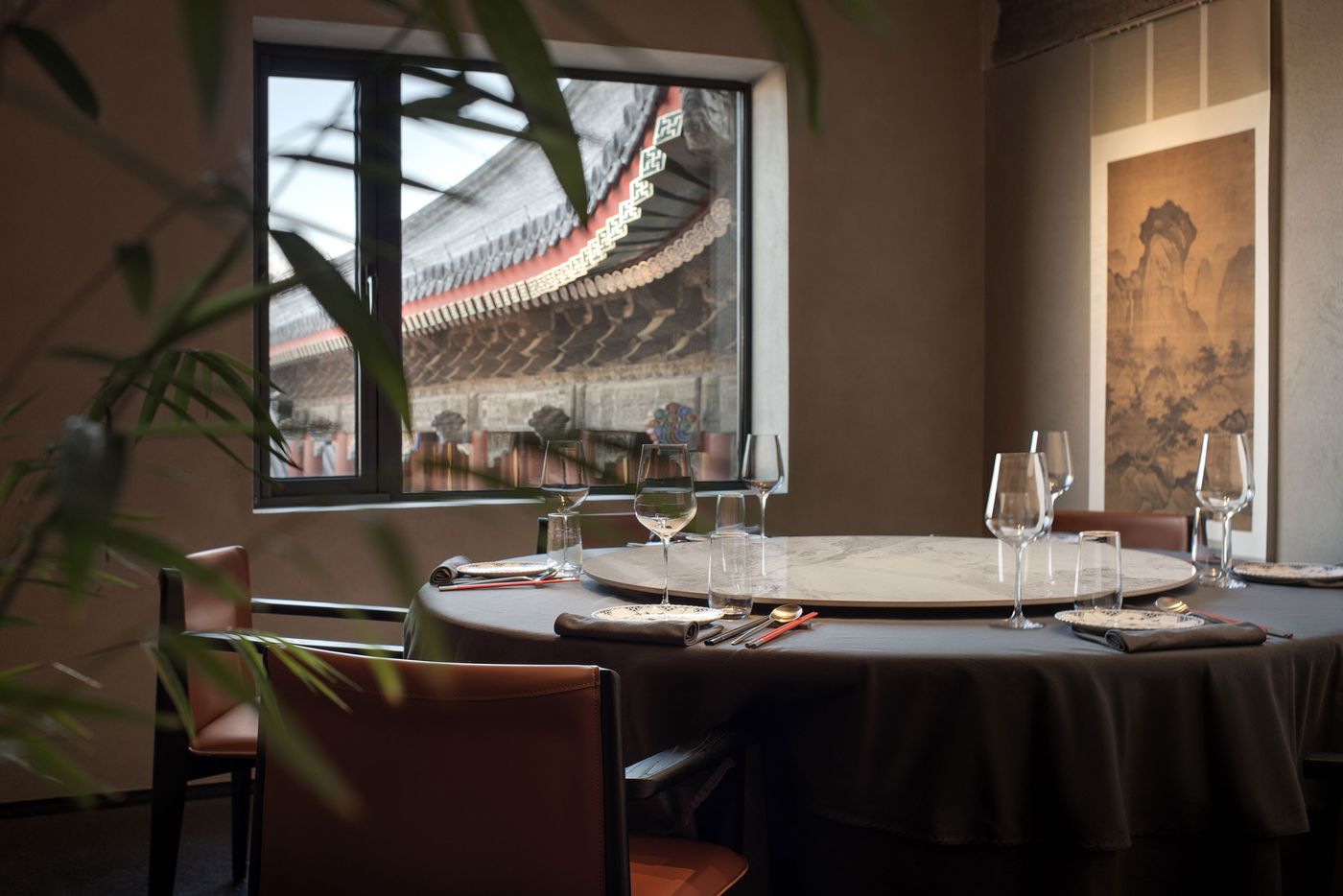
GUI TEMPLE Restaurant Fuses Beijing’s Heritage with Modern Craft
Words by Yatzer
Location
Beijing, China
GUI TEMPLE Restaurant Fuses Beijing’s Heritage with Modern Craft
Words by Yatzer
Beijing, China
Beijing, China
Location
Designed by Beijing-based studio DSC·Design, GUI TEMPLE restaurant offers a masterclass in how conservation and modernization can harmoniously coexist in the context of renovating heritage properties. Located within Beijing’s historic Hong'en Taoist Temple, the space balances reverence with reinvention in reflection of the site’s storied 700-year history. Established in the 14th century as a Buddhist and later Taoist temple, the building morphed into an industrial factory in the 1950s, a bustling farmers’ market in the 1990s, and now, a contemporary cultural landmark along Beijing’s north-south central axis.
Rather than simply restoring the past, DSC·Design breathes new life into the project through what they call Neo-Jinghua Aesthetics, a philosophy that distils Beijing’s architectural legacy into a modern language. At GUI TEMPLE, this vision materializes in a poetic dialogue between old and new—industrial elements softened by weathered wood, historical motifs given fresh expression, and ceremonial spatial rhythms reimagined for modern hospitality.
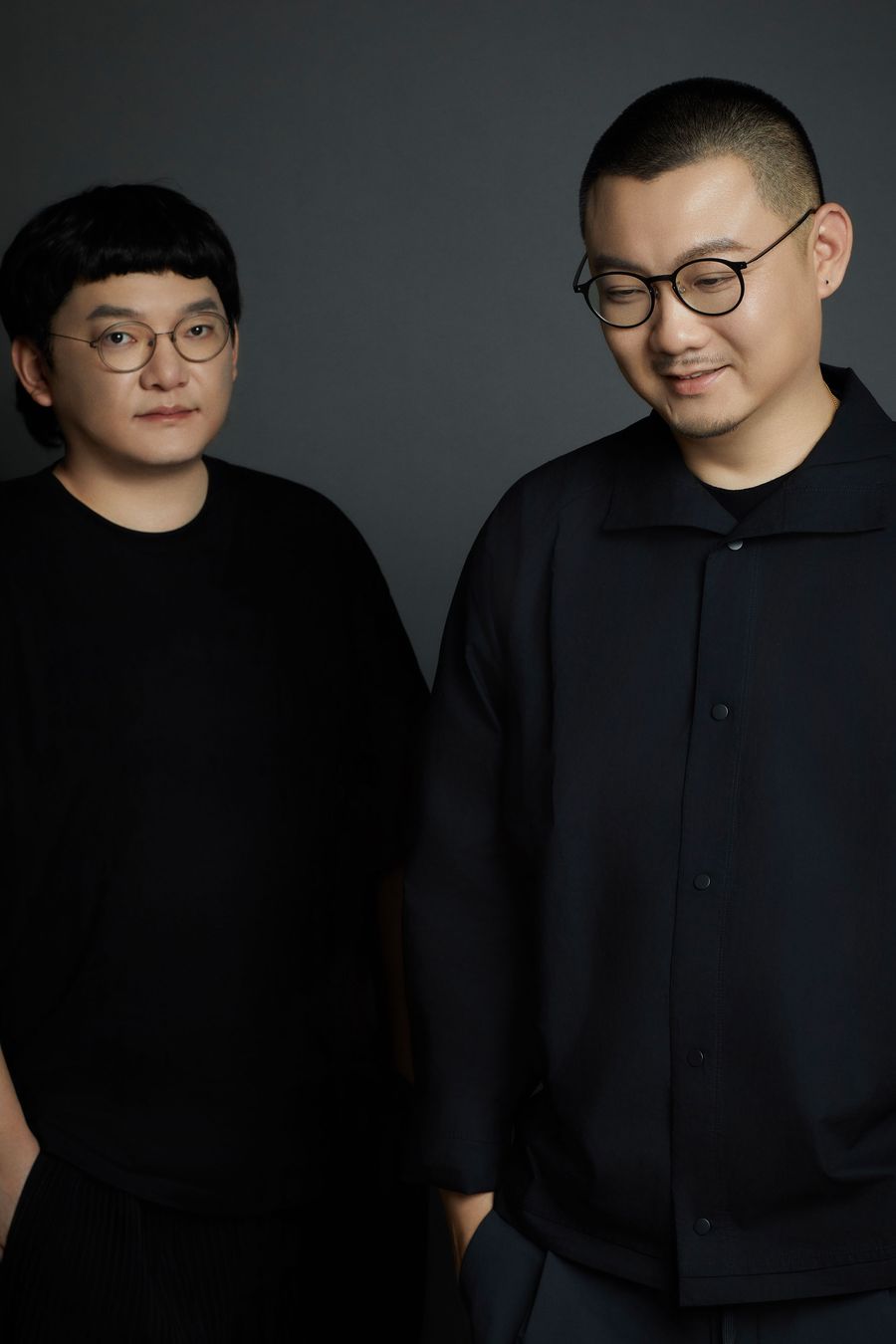
Photography © Valley Vision/Zhong Ziming.
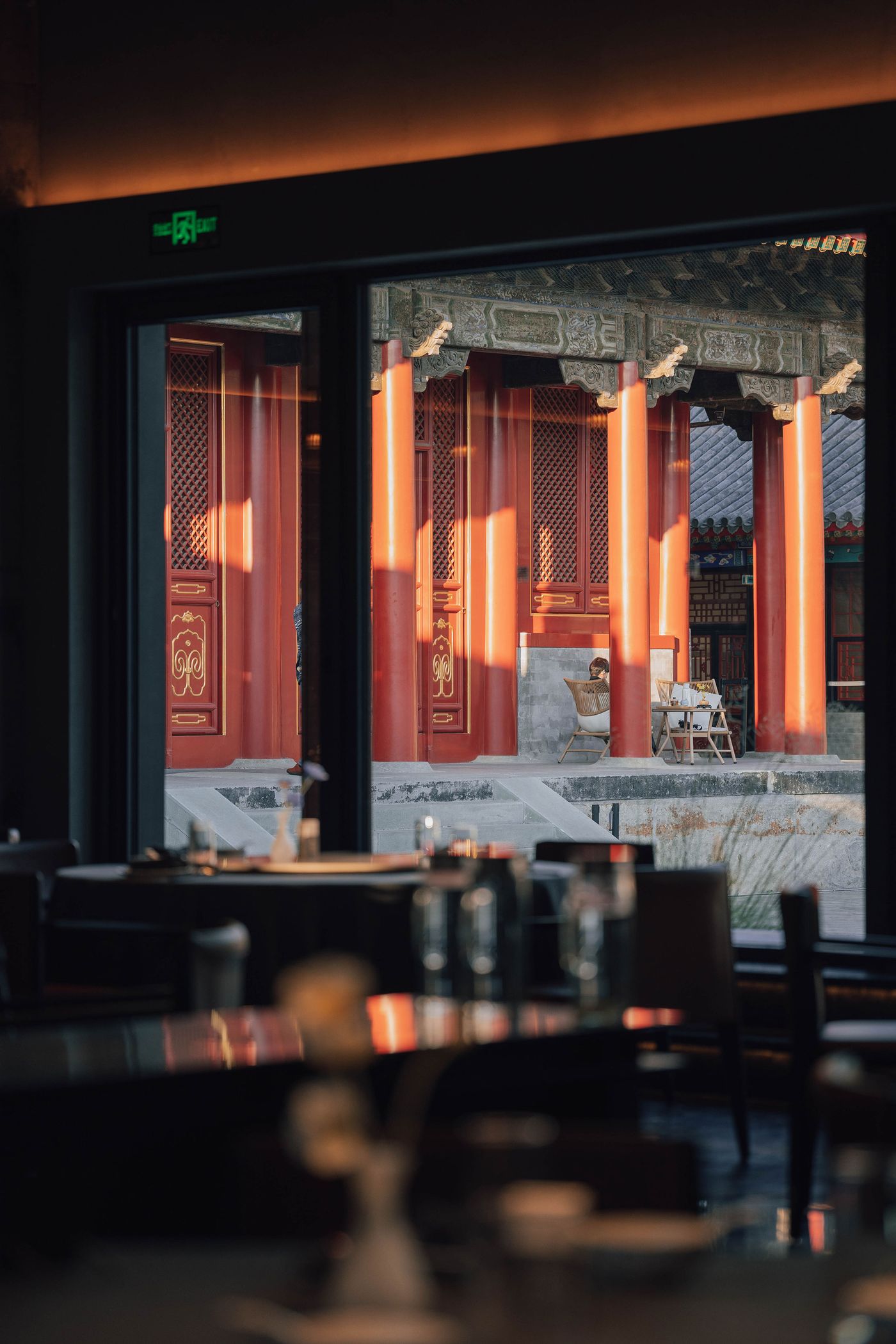
Photography © Beijing Guanzhonghemu Catering Management Co., Ltd.

Photography © Valley Vision/Zhong Ziming.
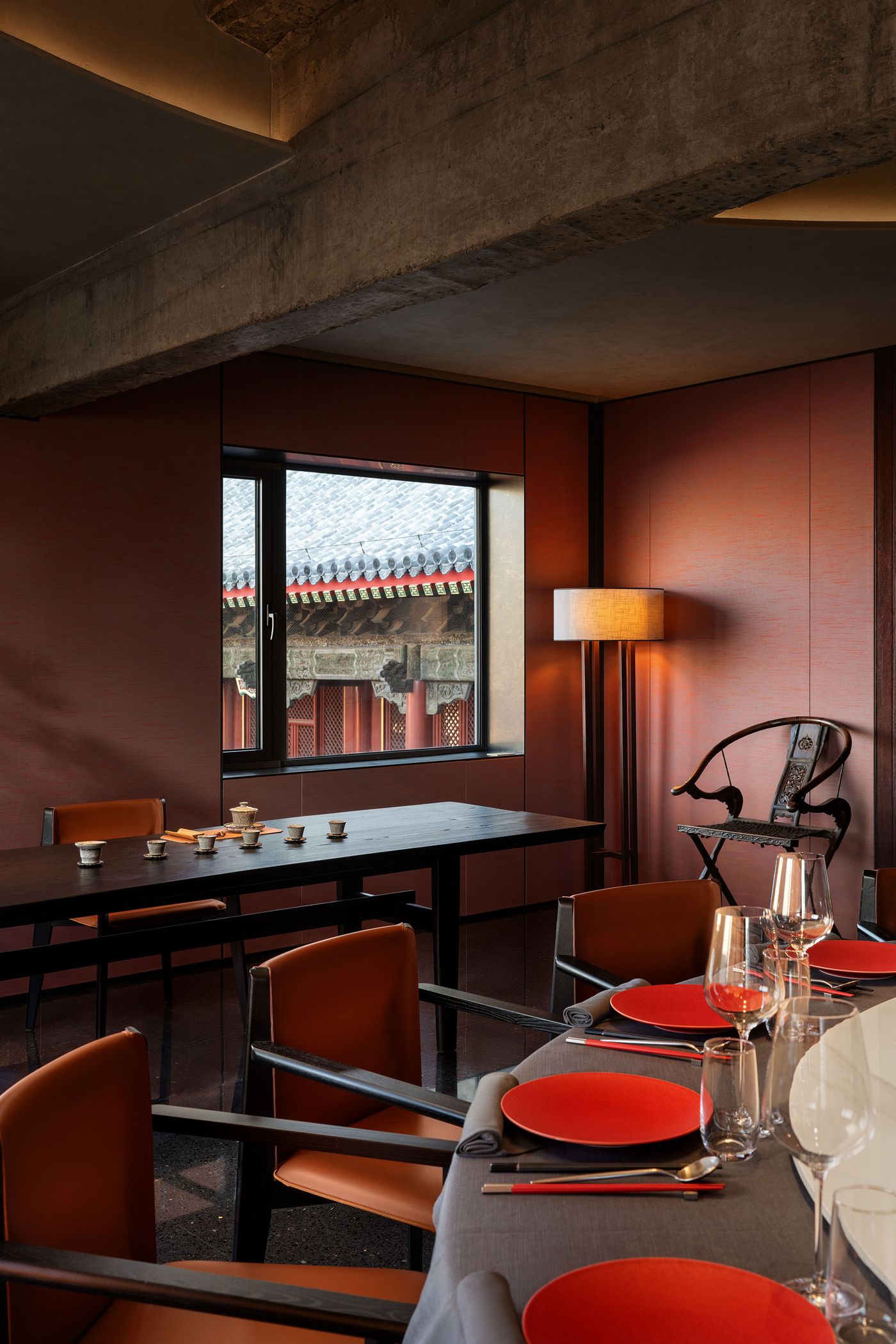
Photography © Valley Vision/Zhong Ziming.
Occupying the temple’s west wing, the restaurant is structured as a sequence of ceremonious spaces, including a voluminous main dining hall and more intimate private dining rooms, that unfold along the property’s elongated, industrial footprint. Formerly windowless walls have been punctuated with glazing, enhancing the connection between interior and exterior, offering glimpses of the temple’s original red columns and intricate eaves. Ethereally lit corridors further heighten the ceremonial drama, leading guests through a carefully orchestrated spatial experience
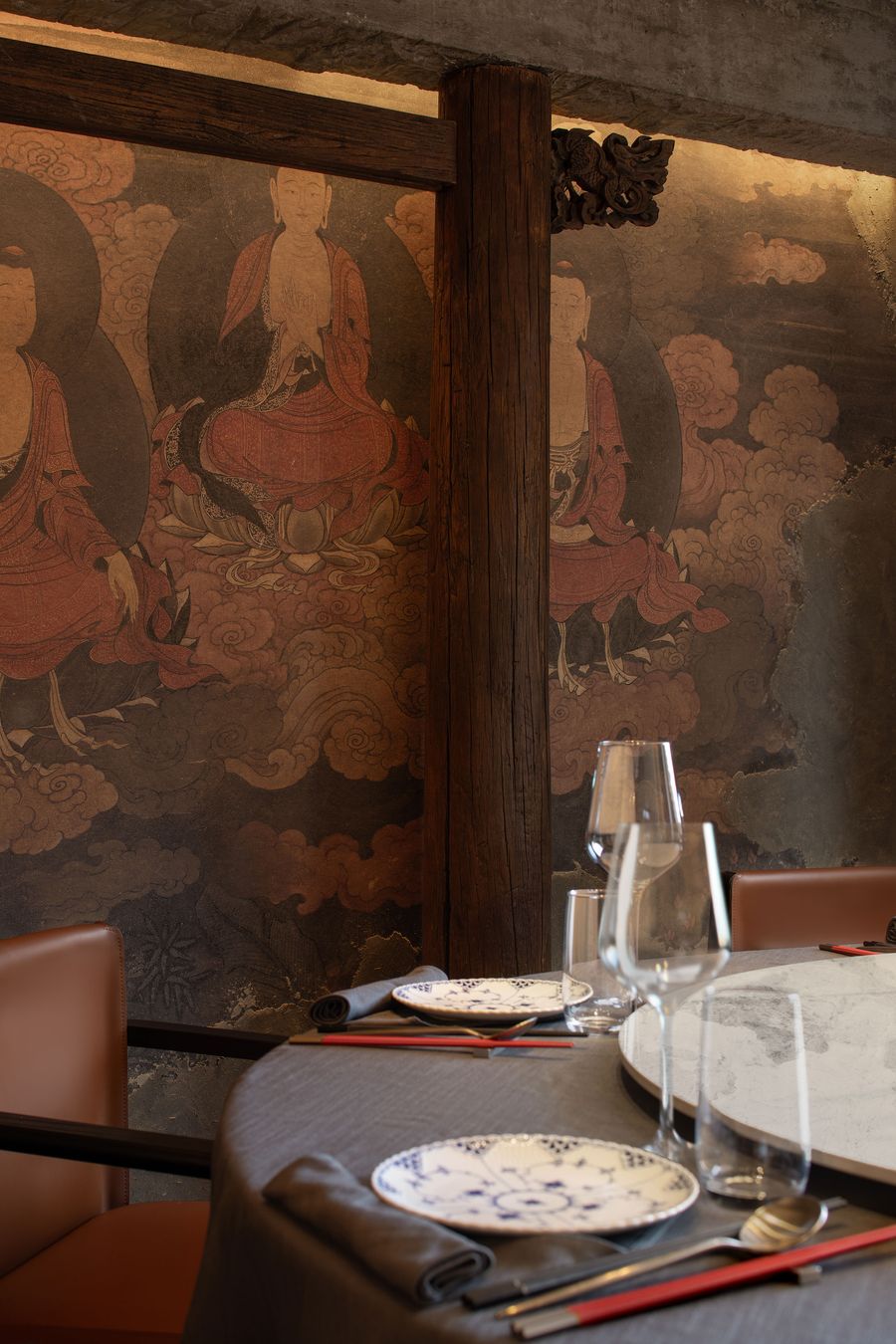
Photography © Valley Vision/Zhong Ziming.

Photography © Valley Vision/Zhong Ziming.
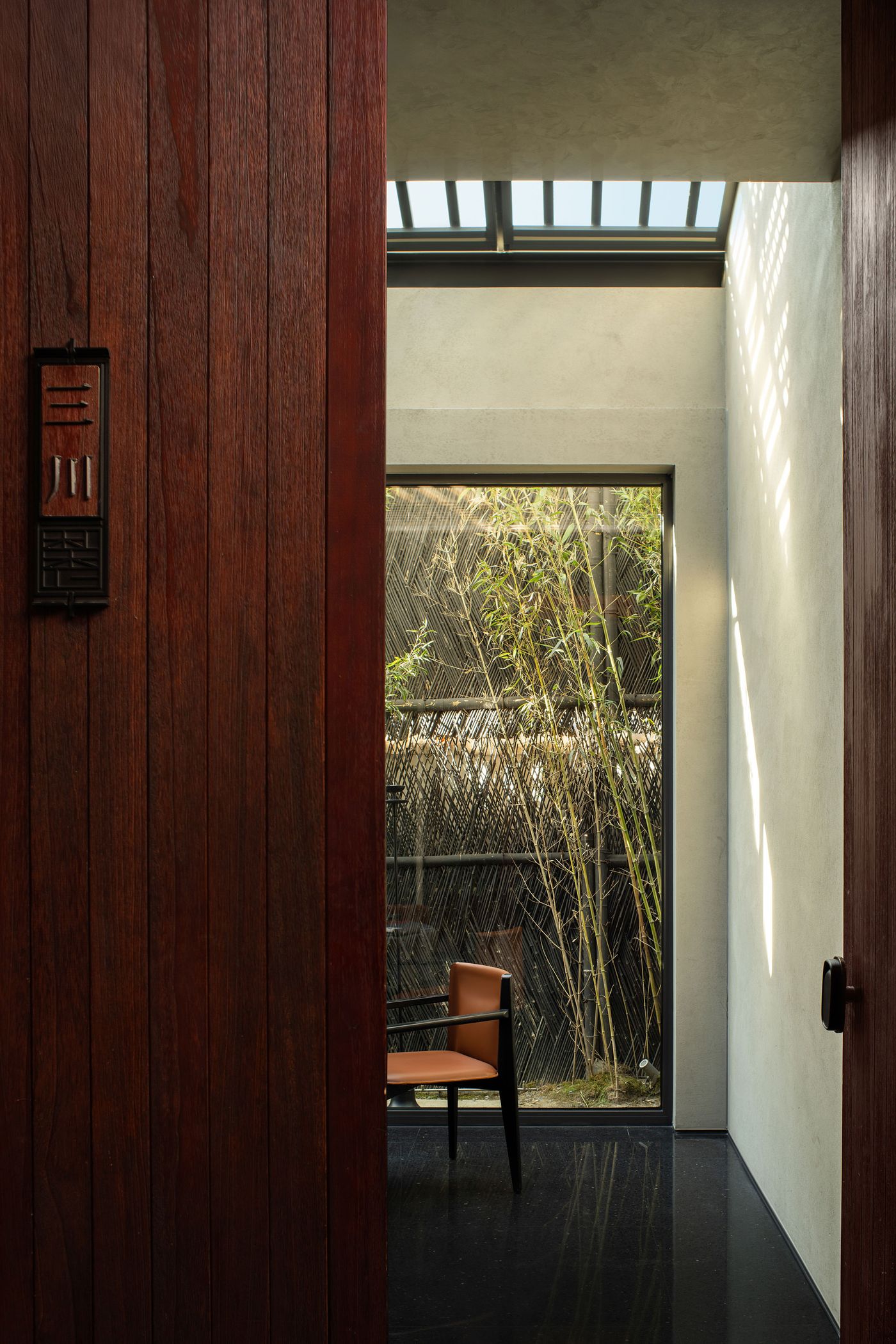
Photography © Valley Vision/Zhong Ziming.
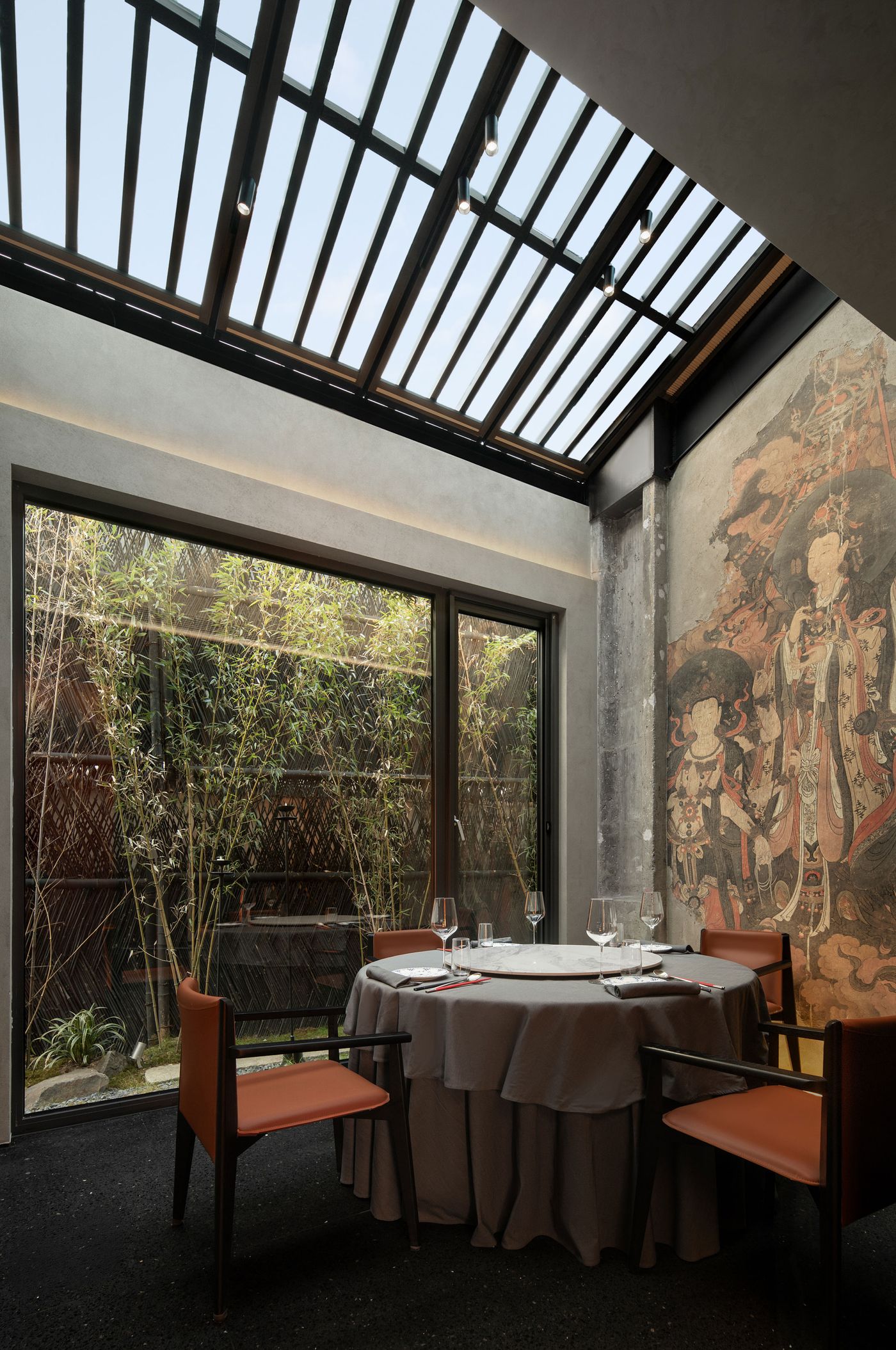
Photography © Valley Vision/Zhong Ziming.
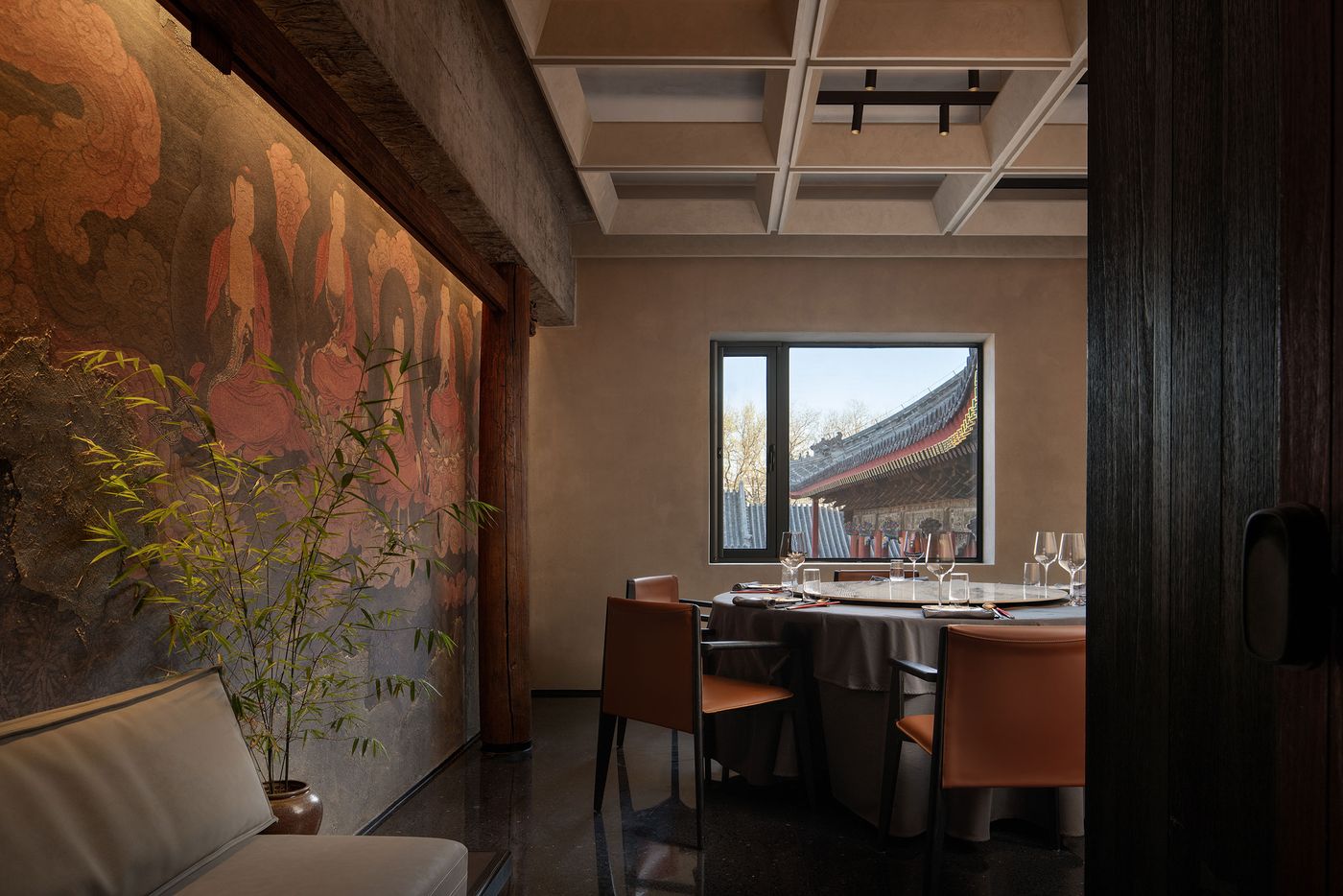
Photography © Valley Vision/Zhong Ziming.
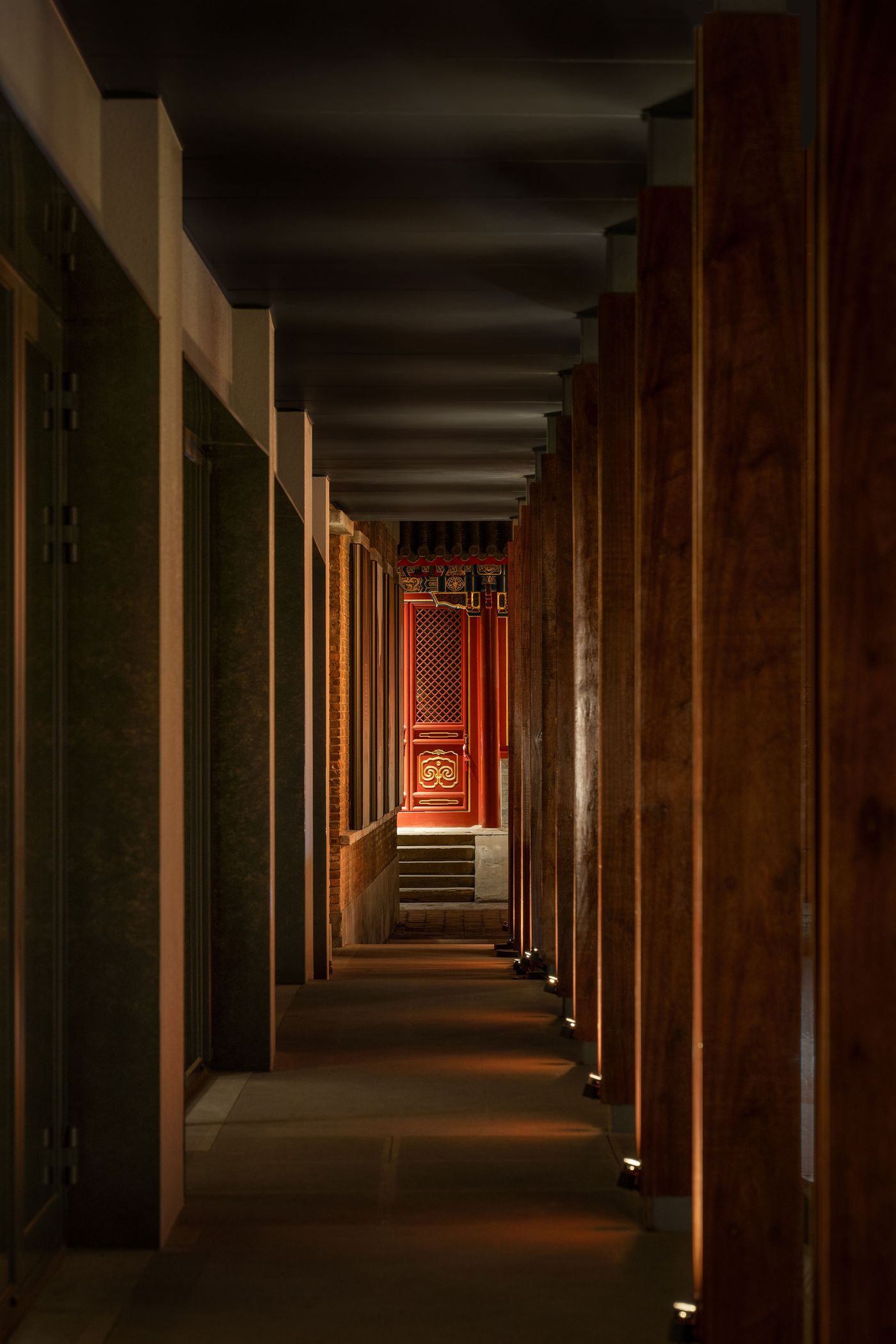
Photography © Valley Vision/Zhong Ziming.
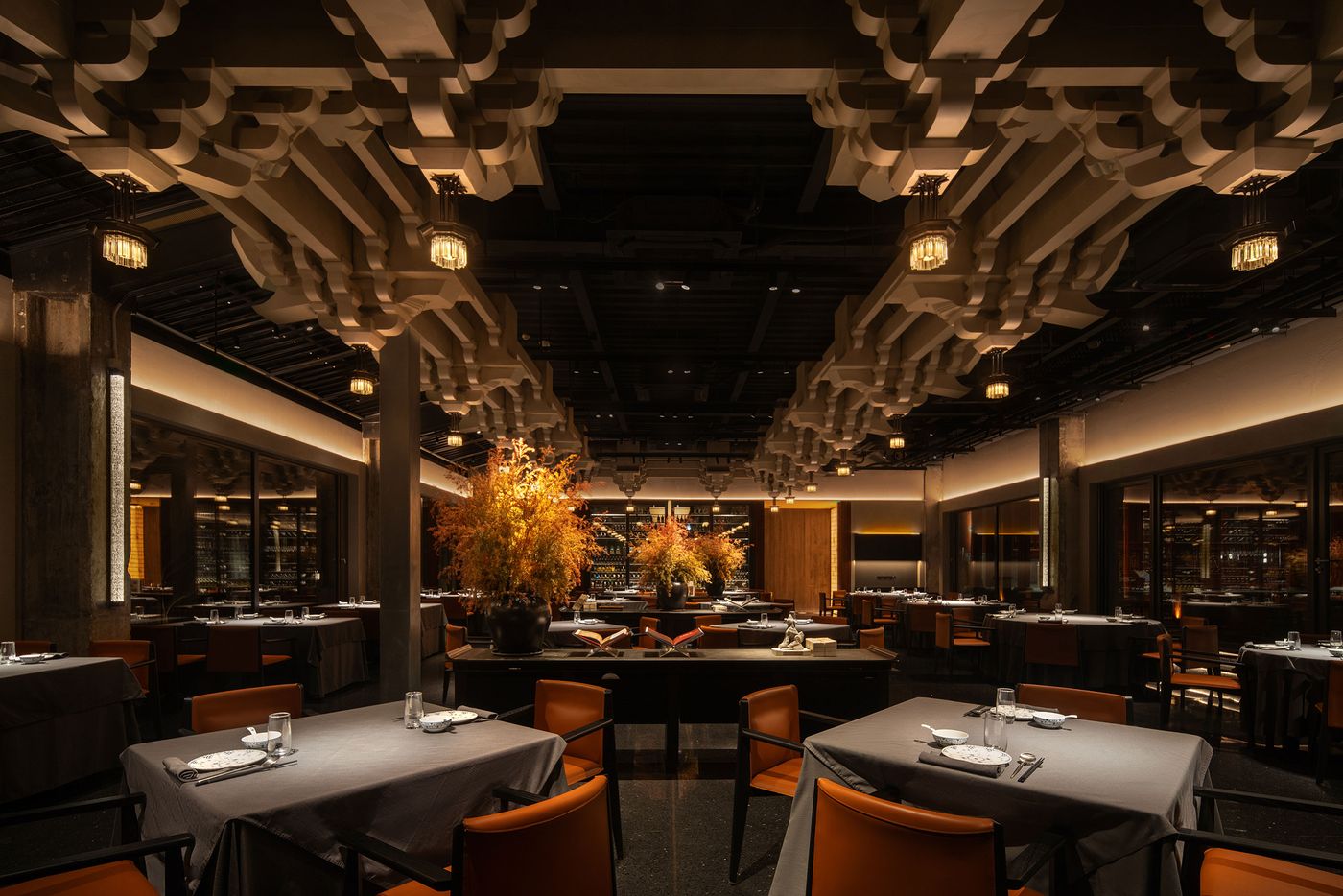
Photography © Valley Vision/Zhong Ziming.
Materiality also plays a key role in GUI TEMPLE’s identity. Concrete columns and beams, intentionally left exposed as a nod to the site’s industrial past, are complemented by traditional carpentry, including restored posts and beams, rustic wall cladding, and Qing Dynasty-style corbels. The latter dominate the main dining hall, assembled into a sculptural structure that adorns the black-painted ceiling. Featuring lantern-like light fittings, this architectural element exemplifies DSC·Design’s talent for creative reinterpretation.
Shoji-style screens, door handles shaped like ancient inkstones, and fragments of Ming-era-style murals embedded within hand-brushed concrete further enrich the design, evoking the property’s layered history, while contemporary sleek furnishings such as glass sconces and leather chairs introduce a refined modernity.
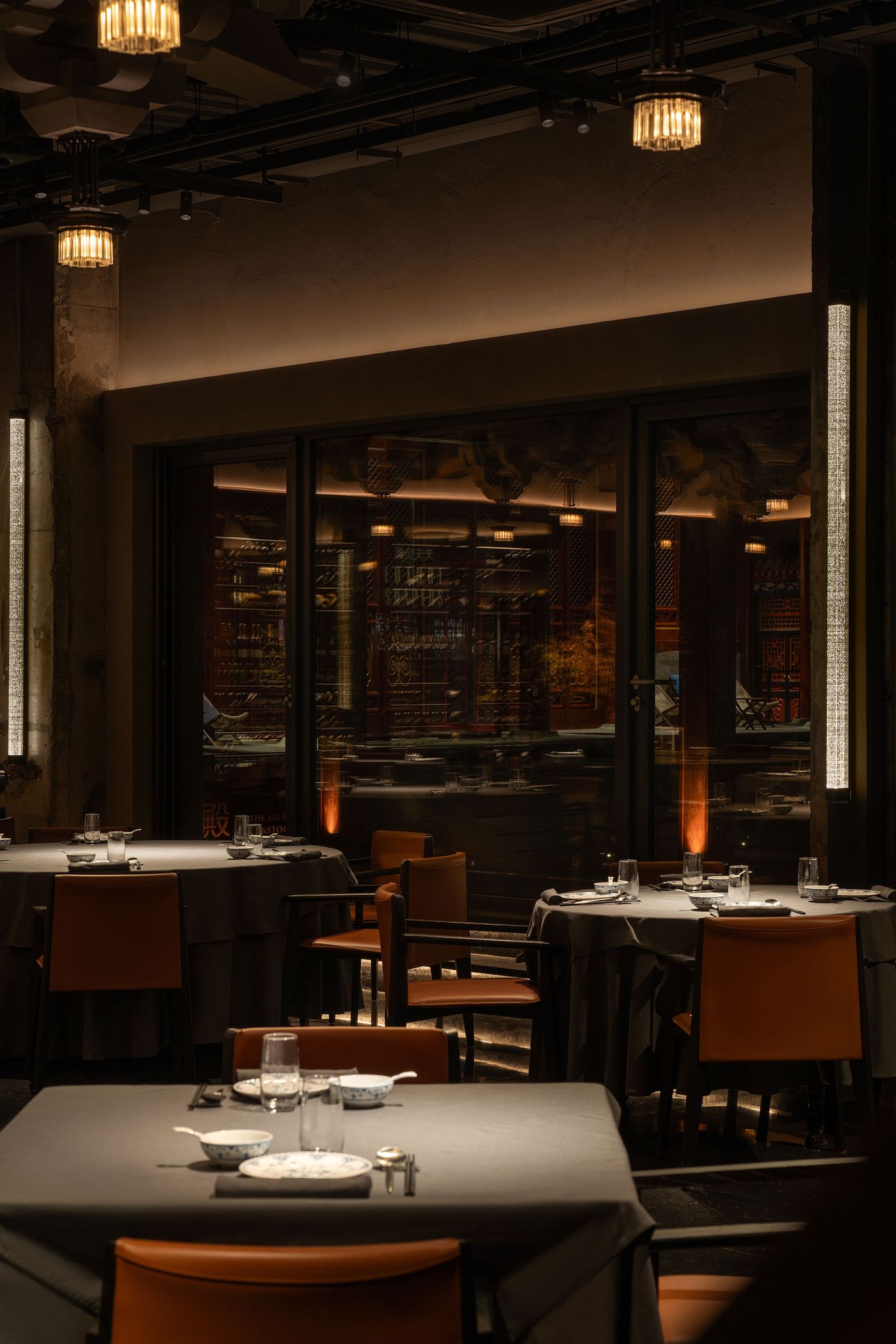
Photography © Valley Vision/Zhong Ziming.
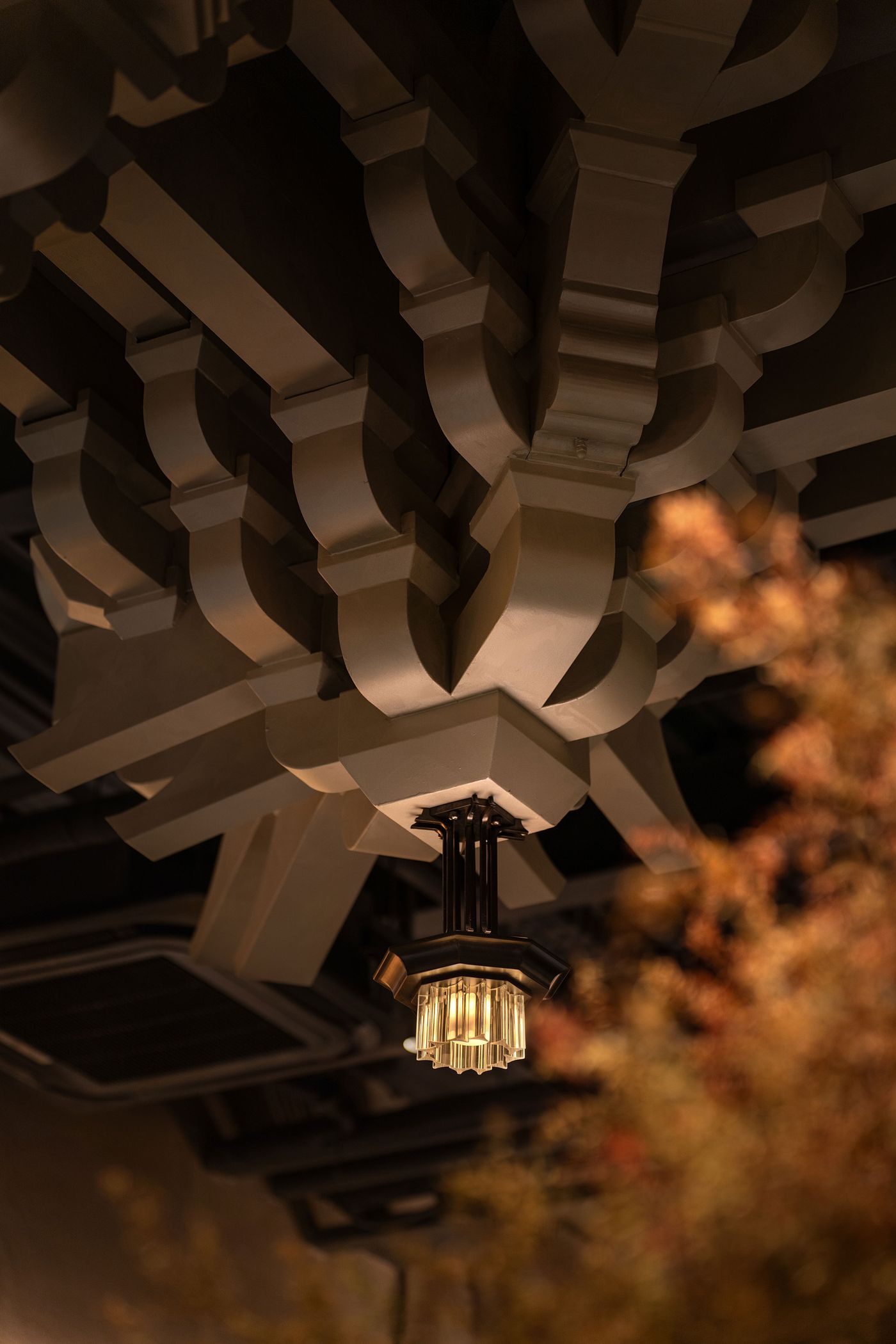
Photography © Valley Vision/Zhong Ziming.
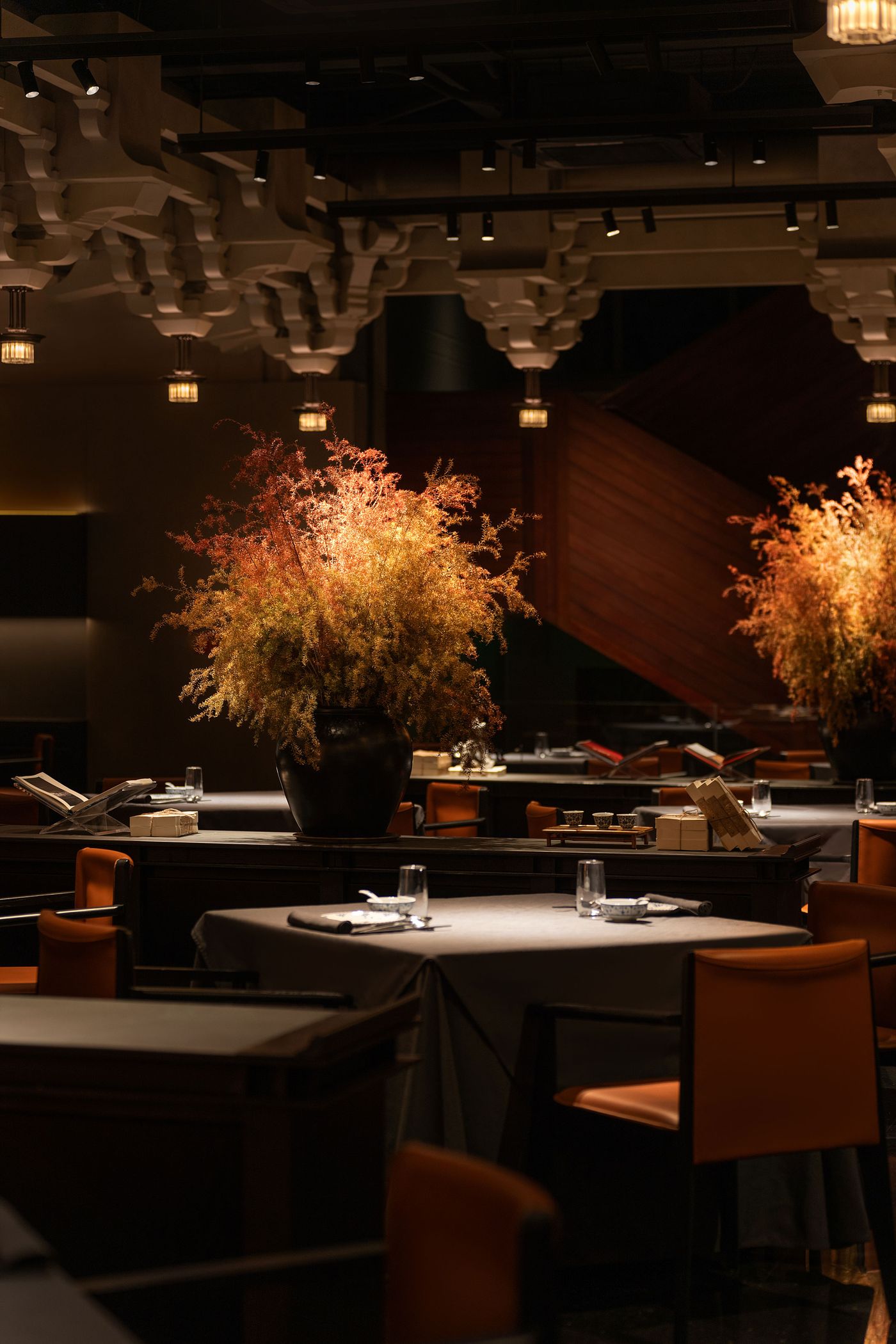
Photography © Valley Vision/Zhong Ziming.
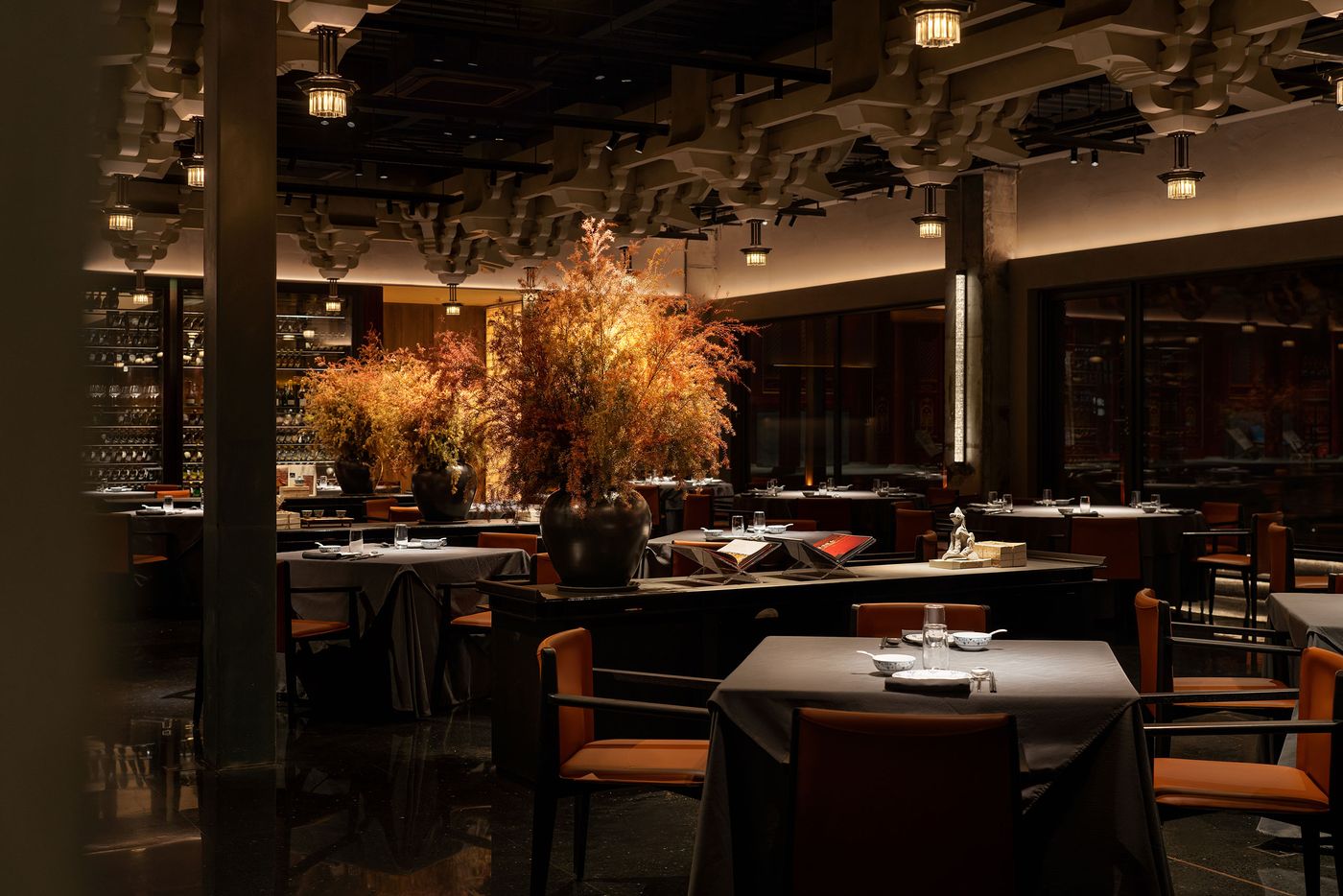
Photography © Valley Vision/Zhong Ziming.
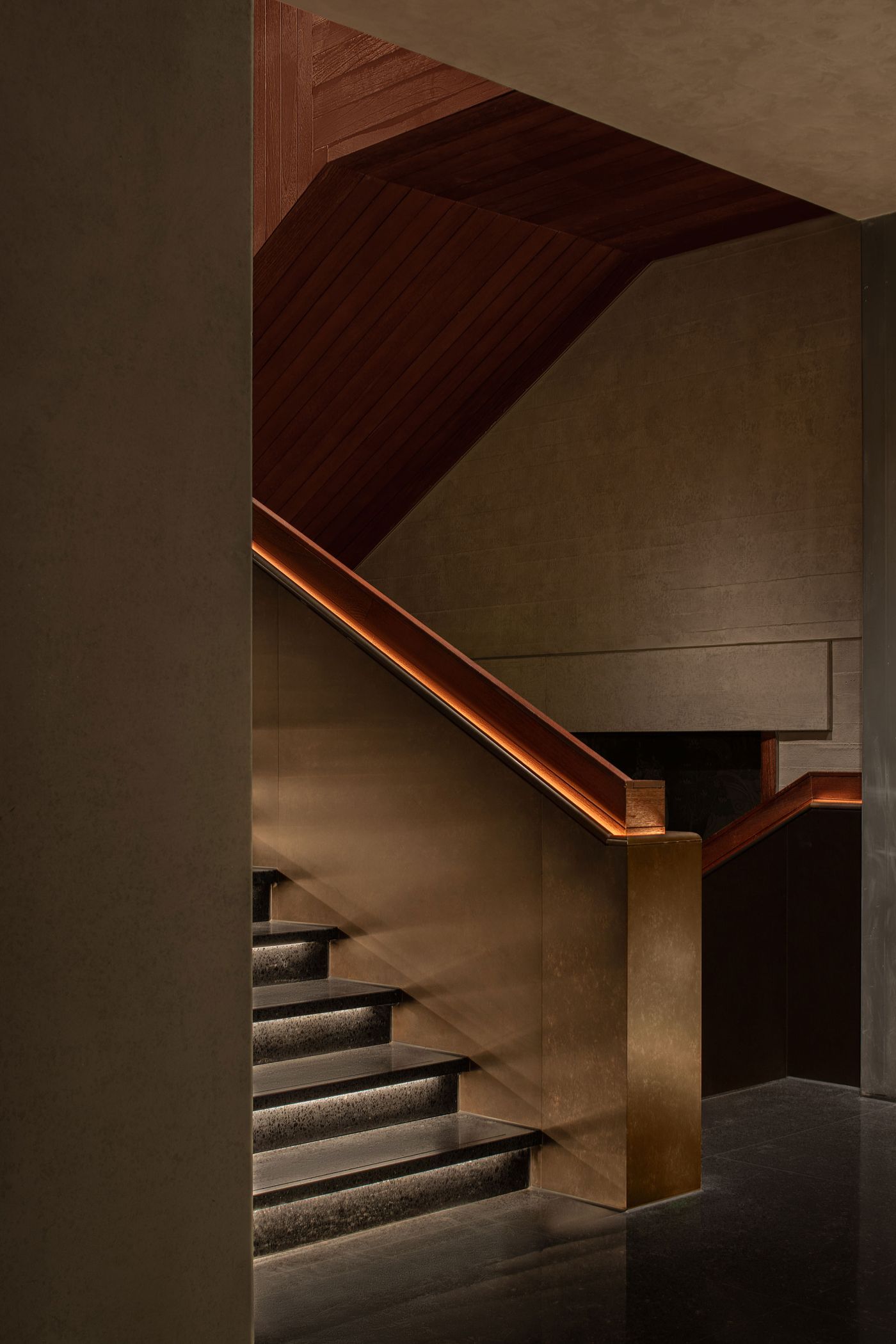
Photography © Valley Vision/Zhong Ziming.

Photography © Valley Vision/Zhong Ziming.
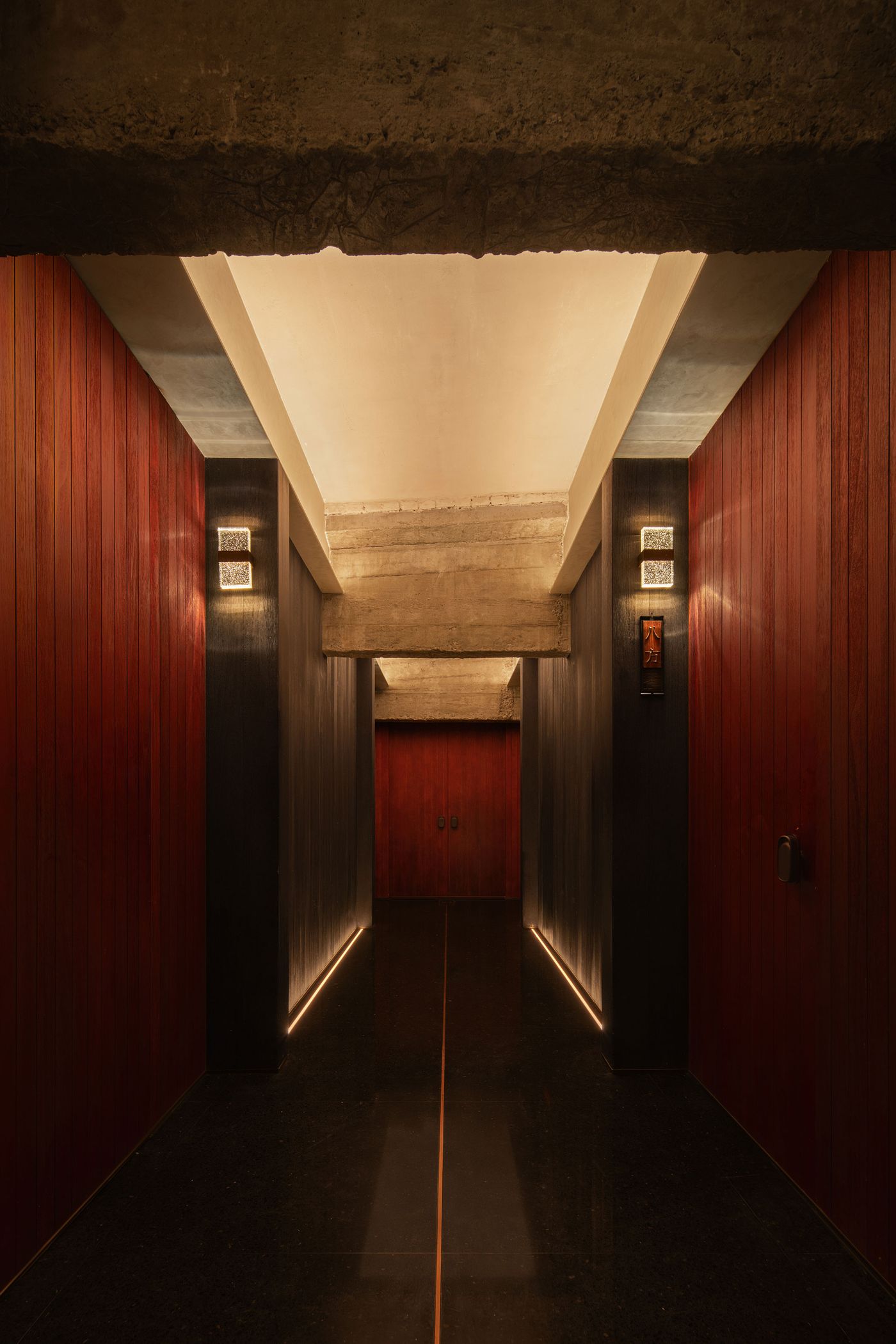
Photography © Valley Vision/Zhong Ziming.
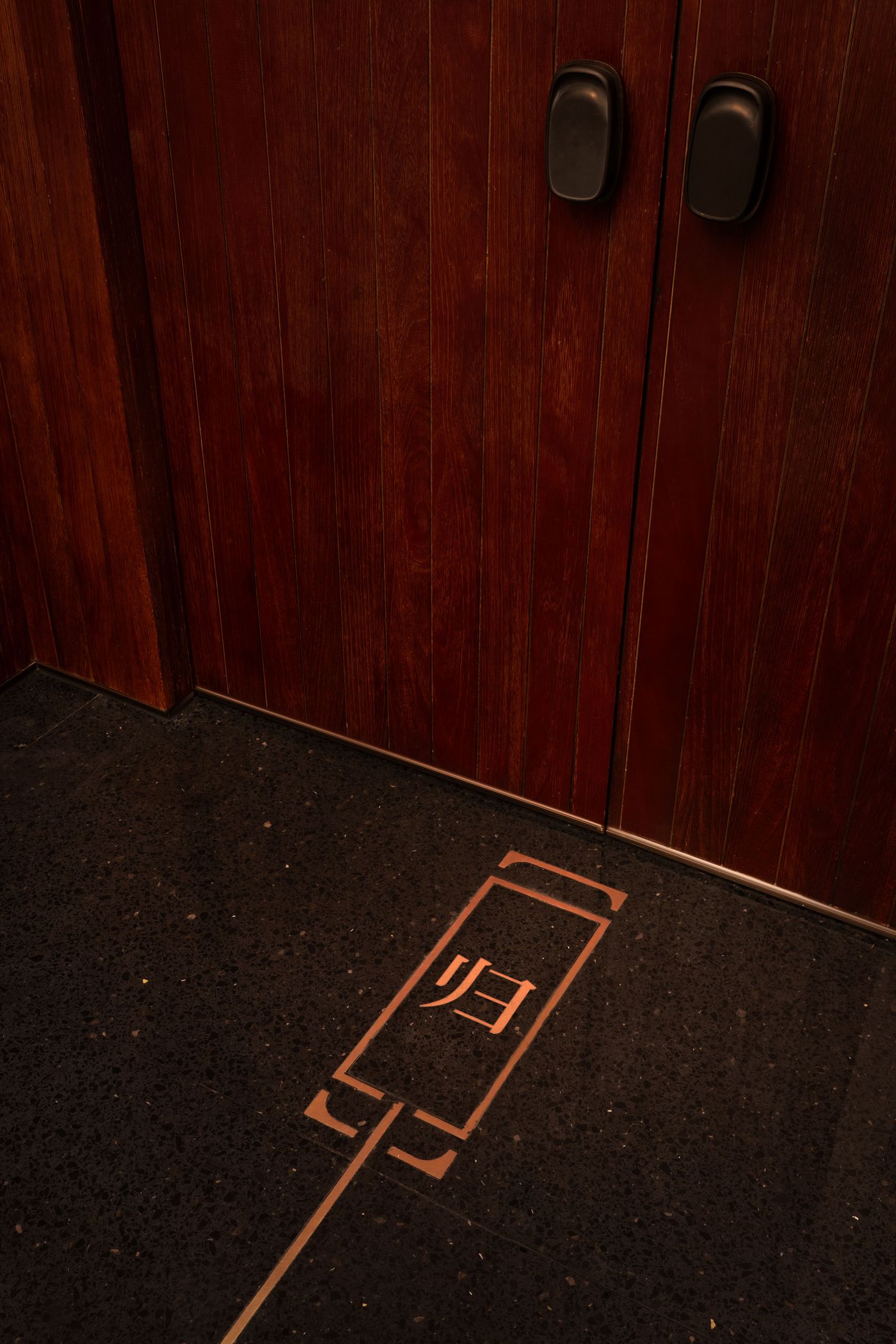
Photography © Valley Vision/Zhong Ziming.
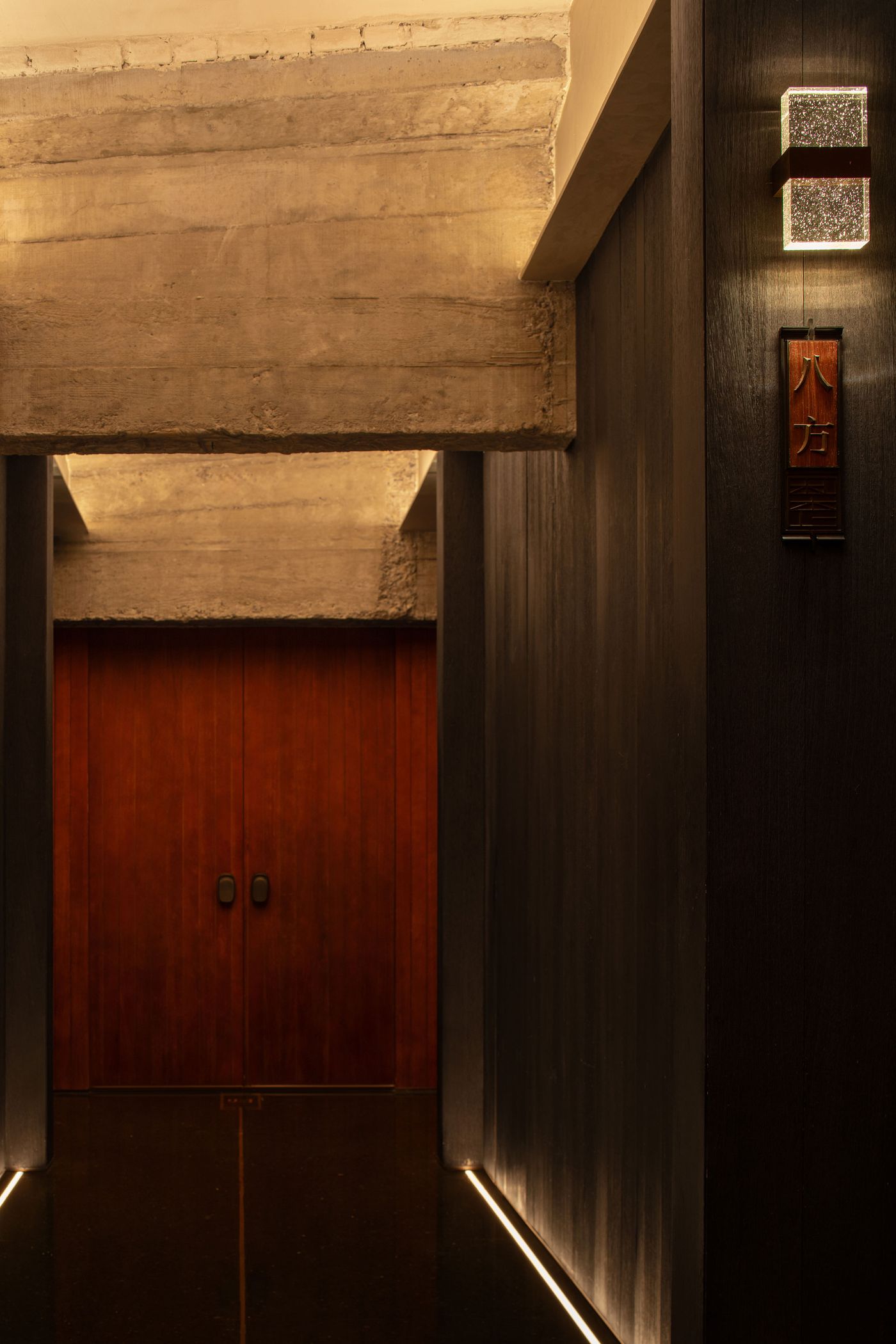
Photography © Valley Vision/Zhong Ziming.
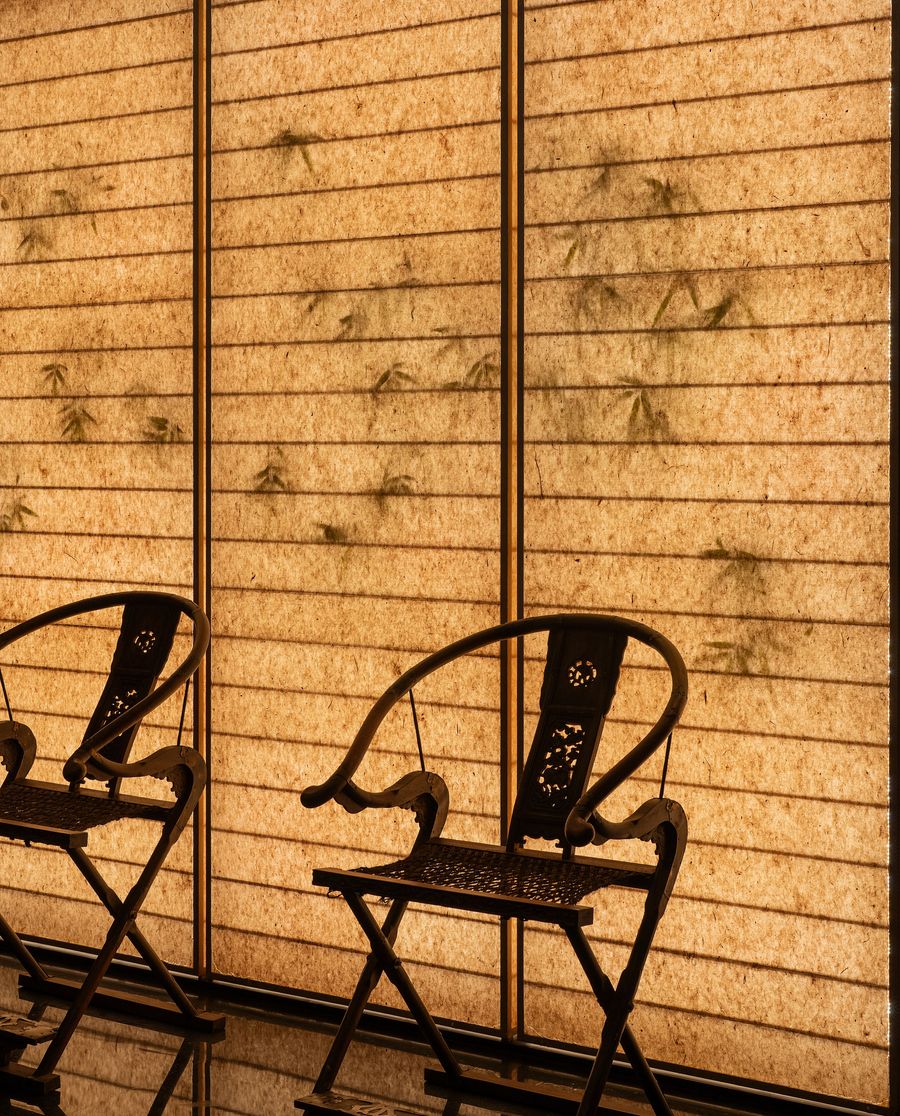
Photography © Valley Vision/Zhong Ziming.
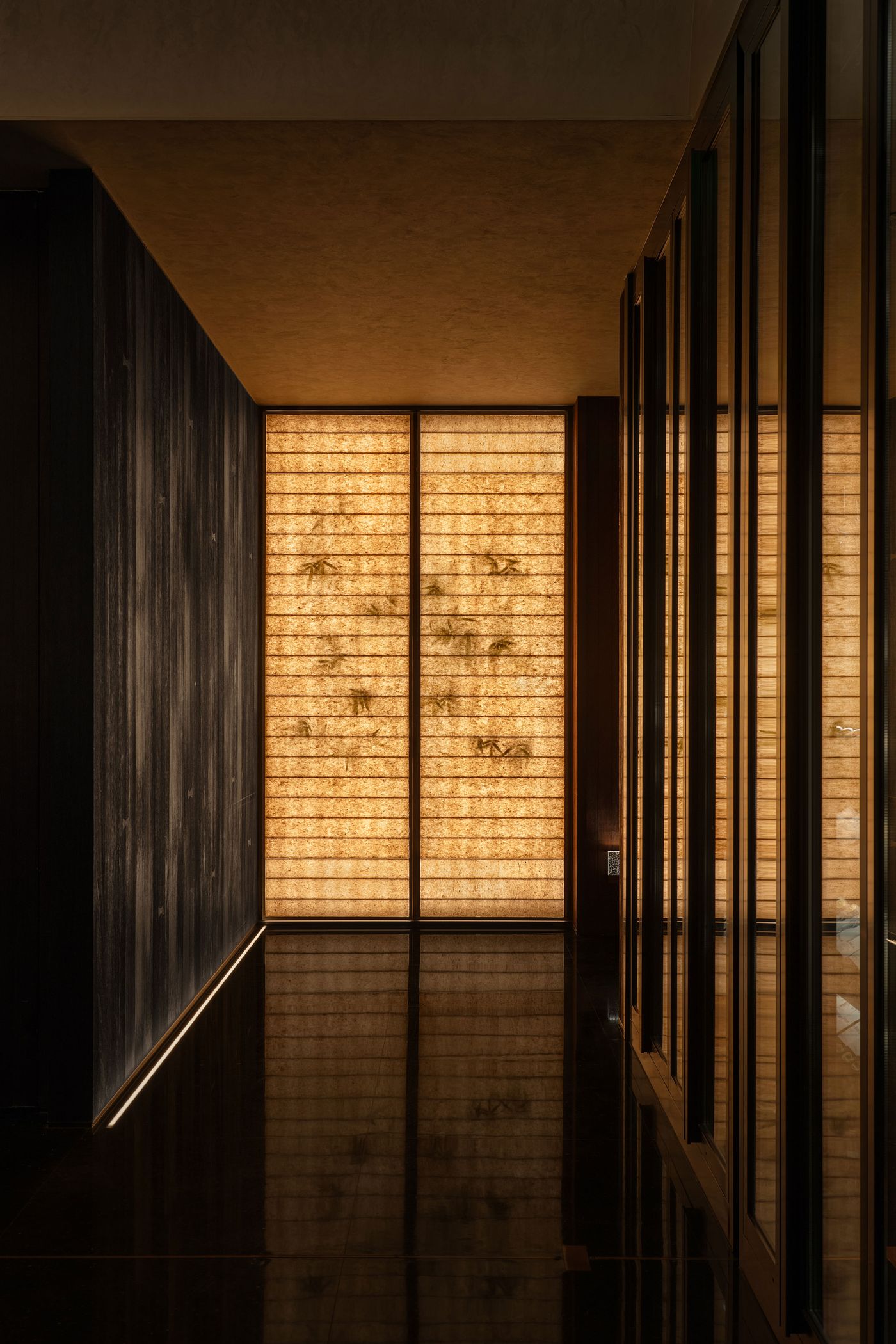
Photography © Valley Vision/Zhong Ziming.

Photography © Valley Vision/Zhong Ziming.
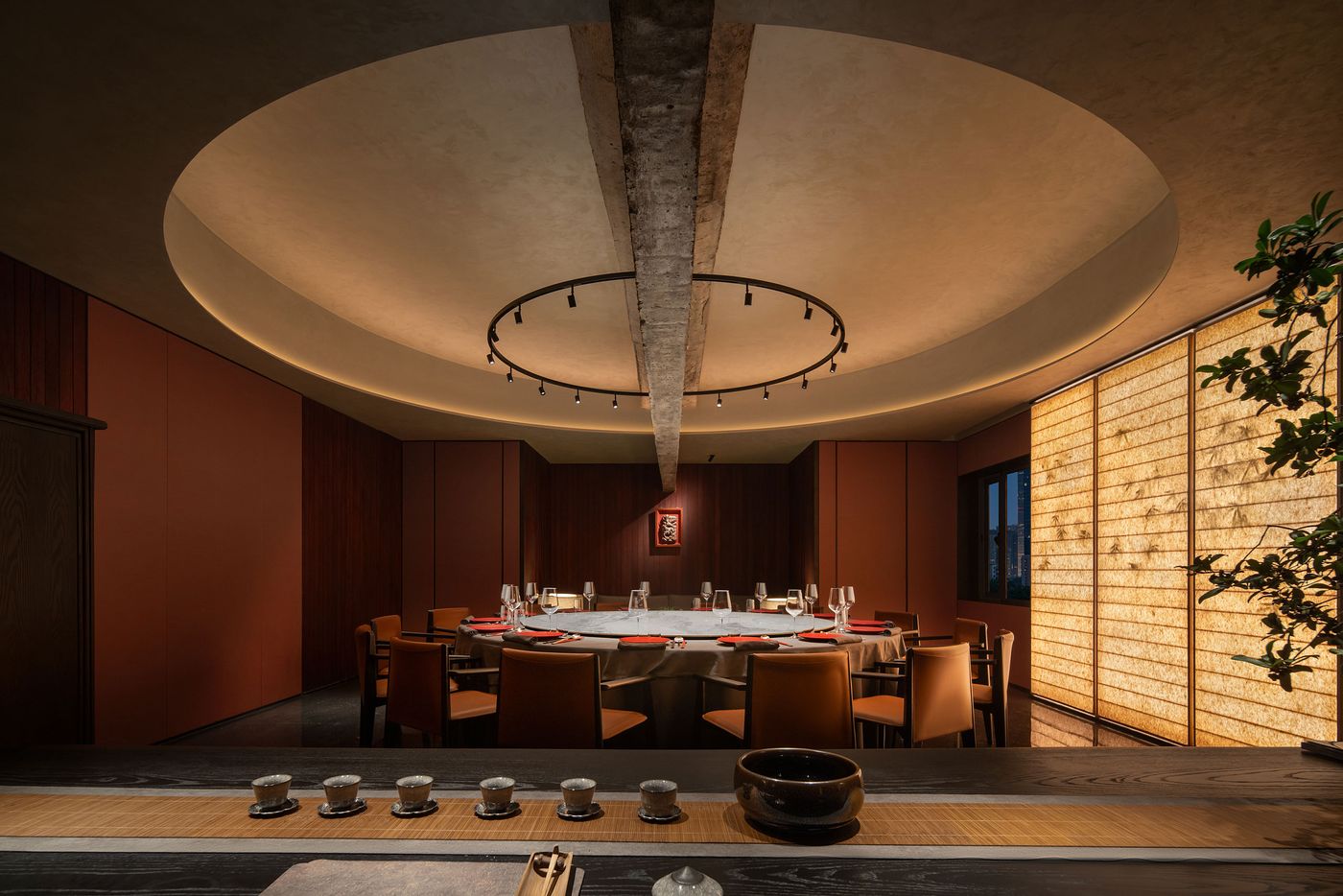
Photography © Valley Vision/Zhong Ziming.
The venue’s immersive ambience is underscored by its soulful colour palette and nuanced illumination. Deep crimson, warm ochre, and charcoal grey, tones inspired by the imperial hues of the Forbidden City, imbue the space with quiet grandeur. Meanwhile, illuminated screens, soft cove lighting, and discreet accents that evoke the glow of sunrise instil a contemplative serenity.
These elements culminate in the largest private dining room on the upper level, the restaurant’s crown jewel. Here, crimson-hued walls, glowing shoji-style screens, and dark grey stone flooring create an atmosphere of refined opulence centred around a round dining table with a marble Lazy Suzan. Above, a large, softly illuminated circular ceiling cove, dramatically bisected by a concrete beam, anchors the space with a bold architectural statement. Just beyond, a tranquil rooftop terrace offers panoramic views of the Bell Tower, reinforcing GUI TEMPLE’s deep-rooted connection to its historic surroundings.
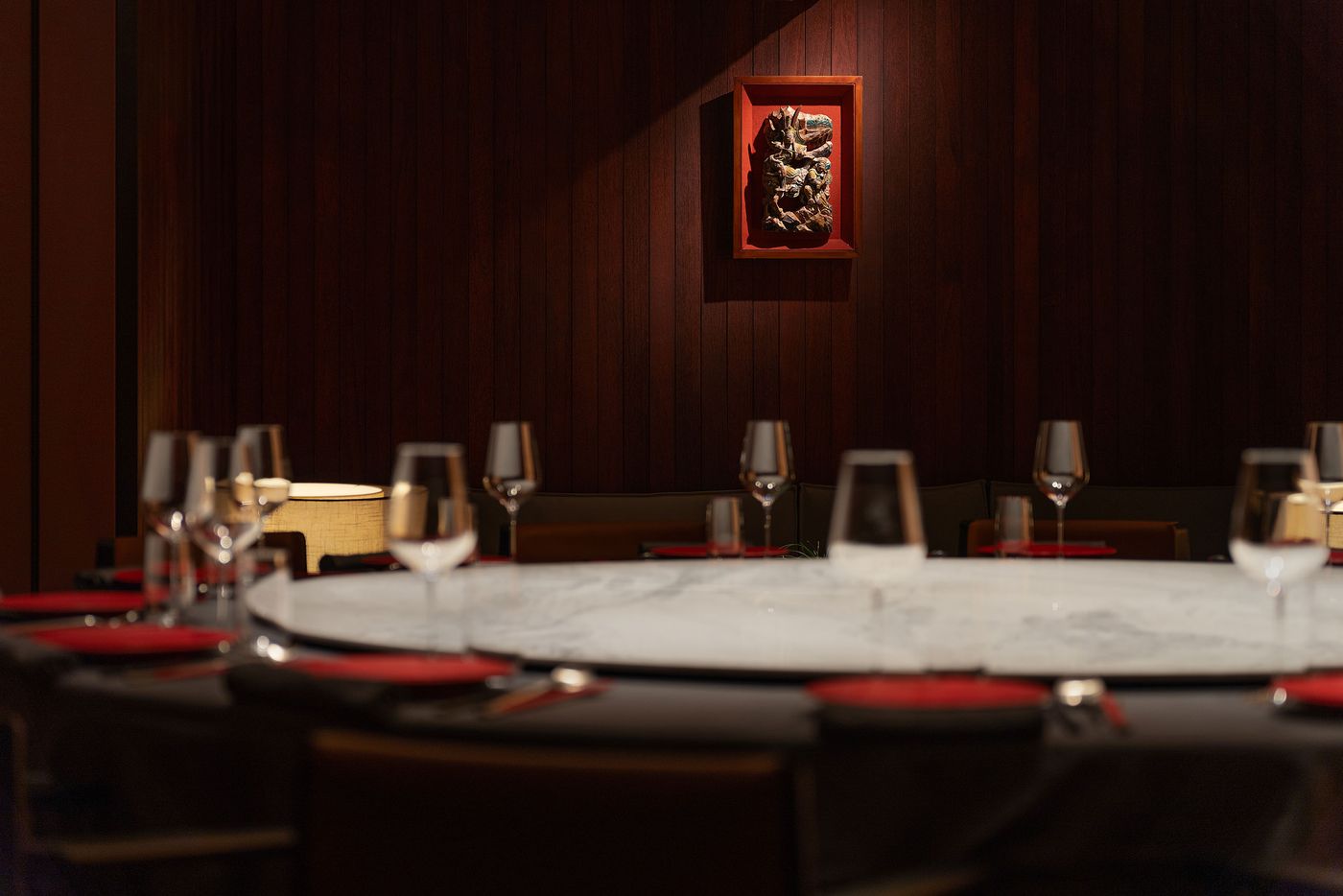
Photography © Valley Vision/Zhong Ziming.
A celebration of both heritage and contemporary refinement, GUI TEMPLE stands as a testament to Beijing’s evolving identity, proving that renewal can honour history all the while embracing the future with elegance and ingenuity.

Photography © Valley Vision/Zhong Ziming.
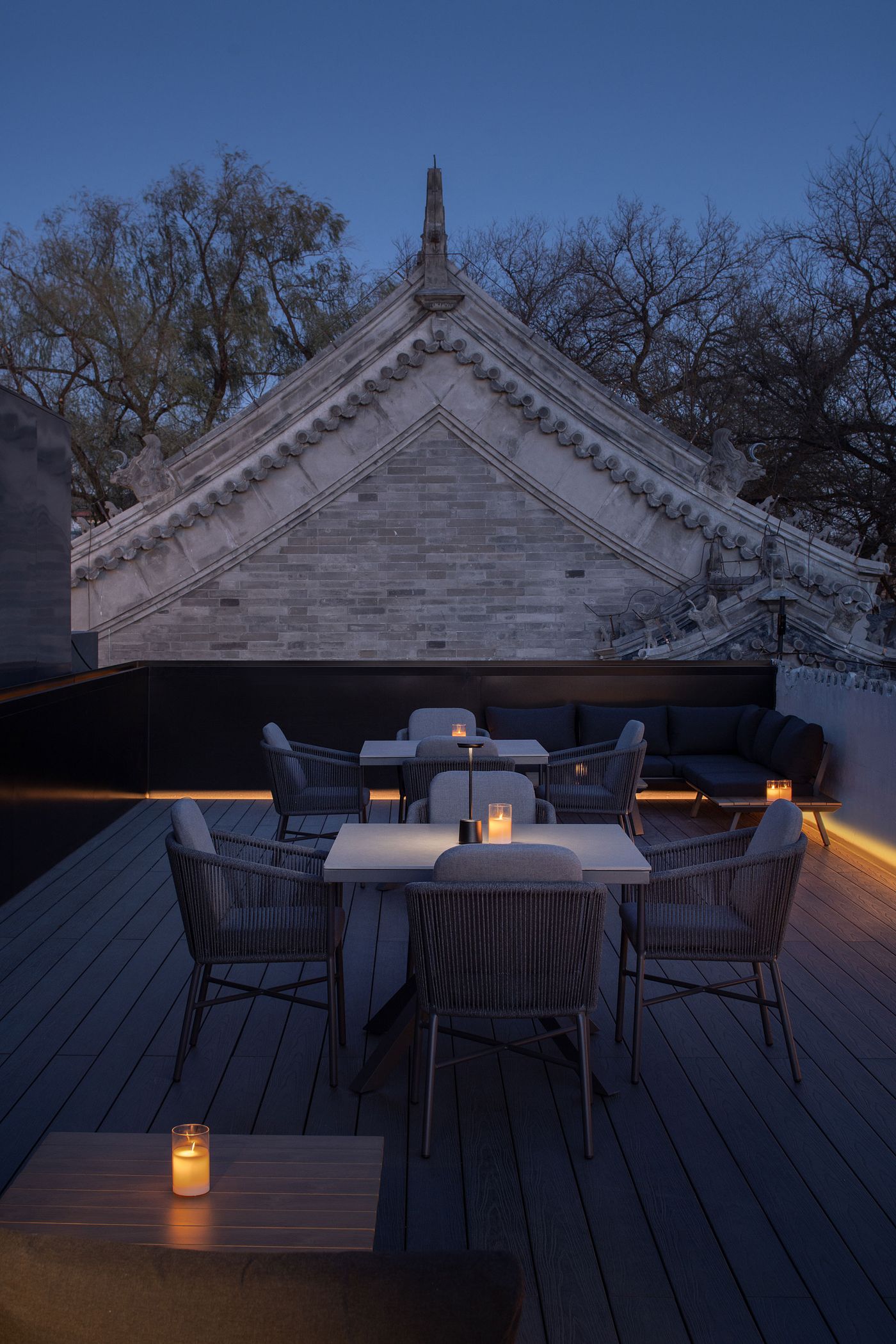
Photography © Valley Vision/Zhong Ziming.
